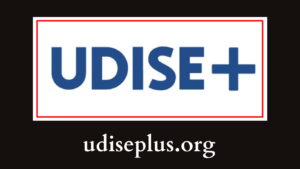In the educational landscape of India, one term frequently surfaces in discussions regarding data management and analysis: UDISE. Understanding the UDISE’s full form and its implications is vital for educators, policymakers, and stakeholders involved in the educational system. This article will delve deep into what UDISE entails, its components, significance, and impact on the education sector.
Table of Contents
ToggleWhat is UDISE?
UDISE stands for Unified District Information System for Education. Launched by the Ministry of Education, Government of India, UDISE is designed to collect, maintain, and analyze educational data across all schools in the country. The primary goal of UDISE is to enhance the quality of education by ensuring that accurate and comprehensive data is available for decision-making, policy formulation, and implementation.
The Evolution of UDISE
Before understanding UDISE, it is essential to trace its evolution:
- Initial Stage: DISE
Prior to UDISE, the District Information System for Education (DISE) was operational. Launched in 2002, DISE aimed to provide basic information about schools across India. However, it had limitations in terms of data accuracy and comprehensiveness. - Transition to UDISE
In 2012, DISE was replaced by UDISE to improve data quality and ensure a more unified approach to educational data management. The transition marked a significant shift toward a more structured and comprehensive system that could cater to the dynamic needs of the education sector.
The Importance of UDISE
The significance of UDISE cannot be overstated. Here are some key reasons why UDISE is crucial for the education sector:
1. Comprehensive Data Collection
UDISE is instrumental in collecting data from a variety of educational institutions, including:
- Government schools
- Private schools
- Schools affiliated with different educational boards
This comprehensive coverage allows for a complete picture of the education landscape across the country.
2. Data-Driven Decision Making
With accurate and up-to-date data, UDISE enables informed decision-making. Educational policymakers can analyze trends, identify gaps, and develop strategies that cater to the specific needs of different regions.
3. Monitoring Educational Progress
UDISE serves as a monitoring tool for assessing the progress of educational initiatives implemented by the government. By analyzing data trends over time, stakeholders can evaluate the effectiveness of policies and programs.
4. Resource Allocation
The insights gained from UDISE data facilitate better resource allocation. By understanding enrollment patterns, infrastructure availability, and teacher-student ratios, policymakers can allocate resources more efficiently to schools that need them the most.
Key Components of UDISE
Understanding the components of UDISE is essential to appreciate its functionality and benefits. Here are the key components:
1. Data Collection
UDISE collects data through a standardized process. The data encompasses various aspects of educational institutions, including:
- School infrastructure (buildings, classrooms, toilets, etc.)
- Enrollment numbers (students enrolled in different grades)
- Teacher information (qualifications, training, etc.)
- Learning outcomes (assessment results)
2. Data Analysis
Once data is collected, it undergoes rigorous analysis to identify trends, disparities, and areas needing improvement in the education sector. Analysts use this data to assess the effectiveness of educational initiatives and policies.
3. Reporting
UDISE generates detailed reports that provide insights into various aspects of education. These reports cover topics such as:
- Enrollment trends
- Infrastructure availability
- Teacher distribution
- Learning outcomes
4. Policy Implementation
The data derived from UDISE informs policymakers, enabling them to design effective educational policies tailored to the needs of different regions and demographics. This data-driven approach helps ensure that interventions are relevant and impactful.
How UDISE Works
To understand UDISE fully, it is essential to grasp how the system operates. Here’s a step-by-step overview of the process:
1. Data Entry
At the beginning of each academic year, schools are required to enter data into the UDISE system. This data entry process is facilitated by designated personnel within the schools.
2. Data Verification
After the data is entered, it undergoes a verification process to ensure accuracy. This may involve cross-checking with existing records and conducting audits.
3. Data Analysis and Reporting
Once verified, the data is analyzed to generate insights. Reports are prepared and disseminated to various stakeholders, including government agencies, school administrators, and educational organizations.
4. Feedback Mechanism
Feedback from stakeholders is collected to continuously improve the data collection and analysis process. This feedback loop ensures that UDISE remains relevant and effective.
UDISE: A Tool for Stakeholders
The significance of UDISE extends beyond mere data collection. It serves as a powerful tool for various stakeholders in the education sector, including:
1. Government Agencies
Government bodies rely on UDISE data to monitor educational progress, allocate resources effectively, and assess the impact of existing policies. The data helps in tracking national and state-level educational indicators.
2. School Administrators
School administrators use UDISE to gain insights into their institution’s performance. By analyzing data related to enrollment, infrastructure, and teacher distribution, they can make informed decisions to improve educational outcomes.
3. Researchers and Analysts
Researchers and educational analysts utilize UDISE data to conduct studies and analyses, contributing to the body of knowledge in the education sector. They can assess the effectiveness of educational initiatives and identify best practices.
4. NGOs and Educational Organizations
Non-governmental organizations working in the education sector can leverage UDISE data to understand the landscape of education and identify areas for intervention. This data helps them design programs that align with the needs of specific communities.
5. Parents and Communities
UDISE data can also be useful for parents and local communities, providing insights into school performance, infrastructure, and resource availability. This transparency fosters accountability among schools and encourages community involvement.
Benefits of UDISE
The implementation of UDISE has brought forth several benefits that contribute to improving the educational ecosystem in India. Here are some key advantages:
1. Enhanced Data Accuracy
One of the primary goals of UDISE is to ensure that data is accurate, up-to-date, and reliable. This enhances the credibility of the information available for decision-making.
2. Comprehensive Coverage
By including data from all types of schools, UDISE offers a comprehensive view of the education system. It highlights disparities in resource allocation and access to quality education, prompting targeted interventions.
3. Data-Driven Policies
Policymakers can develop data-driven policies based on the insights gained from UDISE. This approach leads to more effective and targeted interventions, ensuring that educational policies align with actual needs.
4. Improved Resource Allocation
With accurate data on school infrastructure and student enrollment, resources can be allocated more efficiently. This ensures that schools have what they need to function effectively and provide quality education.
5. Facilitation of Accountability
UDISE fosters accountability among educational institutions. By making data publicly available, schools are encouraged to improve their performance and meet educational standards.
6. Promotion of Equity in Education
The comprehensive data collected by UDISE helps identify disparities in educational access and quality, promoting equity in education. This allows for targeted interventions to support marginalized communities.
Challenges Faced by UDISE
Despite its numerous benefits, UDISE faces certain challenges that can hinder its effectiveness. Here are some common challenges:
1. Data Quality Issues
Ensuring data quality is a significant challenge, as inaccuracies or incomplete data can lead to flawed analysis and misguided policy decisions. Continuous efforts are needed to improve data entry processes and verification mechanisms.
2. Awareness and Training
Many stakeholders may lack awareness of UDISE and its benefits. Training programs are essential to educate school administrators and government officials about data entry, analysis, and usage.
3. Technology Limitations
In some regions, limited access to technology can impede data collection and analysis efforts. Bridging the digital divide is crucial for ensuring that all schools can participate in the UDISE system.
4. Interoperability
Ensuring that UDISE systems can effectively communicate with other educational databases is crucial for comprehensive data analysis. This requires standardization of data formats and protocols.
5. Resistance to Change
Some educational institutions may resist adopting new data management systems. Building a culture of data-driven decision-making requires time and effort.
How to Access UDISE Data
Accessing UDISE data is essential for stakeholders interested in analyzing educational trends and making informed decisions. Here’s how you can access it:
1. Visit the UDISE Portal
The official UDISE portal provides access to a wealth of information, including reports and datasets. Users can navigate the portal to find relevant data for their needs.
2. Utilize Reports
Annual reports published by the Ministry of Education offer insights into the findings derived from UDISE data. These reports often include detailed analyses and recommendations.
3. Collaborate with Educational Institutions
Educational institutions often have access to UDISE data and can share relevant insights with stakeholders. Collaborating with schools and universities can provide valuable information for research and analysis.
4. Engage with Research Organizations
Research organizations and think tanks frequently analyze UDISE data to produce studies and reports. Engaging with these organizations can yield valuable insights.
Frequently Asked Questions (FAQs)
1. What is the full form of UDISE?
The full form of UDISE is Unified District Information System for Education.
2. Why is UDISE important?
UDISE is crucial for collecting and analyzing educational data, which helps in informed decision-making, policy formulation, and resource allocation in the education sector.
3. Who manages the UDISE data collection?
The data collection for UDISE is managed by the Ministry of Education, Government of India, with support from educational institutions across the country.
4. How often is UDISE data updated?
UDISE data is typically updated annually, coinciding with the academic year.
5. Can parents access UDISE data?
While UDISE data is primarily intended for policymakers and educational institutions, it is increasingly becoming available to the public, allowing parents and communities to access information about school performance and infrastructure.
6. What kind of data does UDISE collect?
UDISE collects data on school infrastructure, student enrollment, teacher qualifications, and learning outcomes, among other aspects of the education system.
7. How does UDISE contribute to improving education?
By providing accurate and comprehensive data, UDISE enables policymakers to develop targeted interventions, allocate resources efficiently, and monitor educational progress, ultimately contributing to improved educational outcomes.
8. Is UDISE applicable to private schools?
Yes, UDISE includes data from both government and private schools, ensuring comprehensive coverage of the education sector.
9. What are the challenges faced by UDISE?
Challenges include data quality issues, limited awareness and training among stakeholders, technology limitations, and resistance to change in some educational institutions.
10. How can I access UDISE reports?
You can access UDISE reports through the official UDISE portal, which provides a range of reports and datasets for analysis.
Conclusion
In conclusion, the UDISE full form—Unified District Information System for Education—represents a pivotal development in India’s education sector. By providing a comprehensive framework for data collection, analysis, and reporting, UDISE empowers stakeholders to make informed decisions, monitor educational progress, and implement effective policies. Despite facing challenges such as data quality issues and technology limitations, the benefits of UDISE far outweigh the drawbacks. As we move forward, it is essential to continuously improve and adapt UDISE to meet the evolving needs of the education sector, ensuring that every child has access to quality education.





